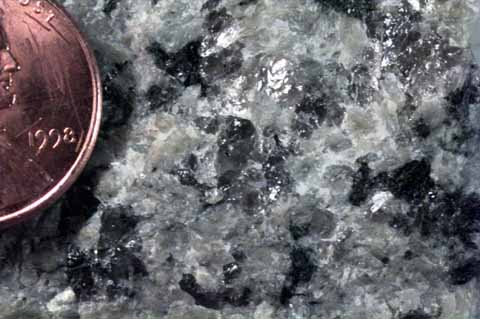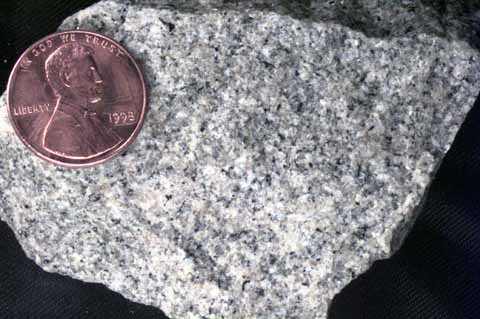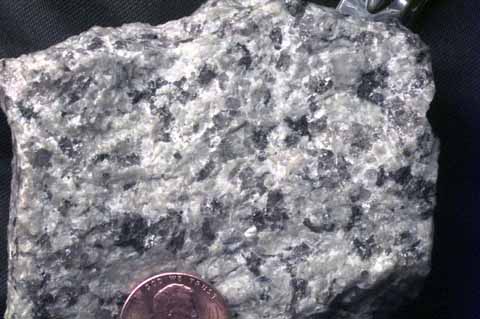|
Description
monzonite is one of three rocks dominated by feldspar (the others being anorthosite and syenite) with occasional other minerals thrown in in lesser amounts (although the rock can go 100% plagioclase.) The plagioclase is sodium rich, unlike anorthosite which is calcium rich.
Typical Minerals
Tectonic Association
monzonite is not a common rock, but is typically found around the edges of other felsic plutons, such as plagio granites or grano diorites. That is, it is typical of continents.
Detail

Description
In this detail we see the white translucent plagioclase, and some hints of faint pink orthoclase. The mafics are amphibole (and are perhaps a bit high for a monzonite).

Description
This light colored rock might almost be confused for a granite, but it has less than 20% quartz, removing it from that classification. Even in this view pink orthoclase can be seen, but the most common mineral is plagioclase (which with quartz <20%) makes it a monzonite. Mafics are clearly rare.
Another Sample

Description
anorthosite is a very unusual rock, not only because it is composed only of calcium plagiclase, but also because it is relatively rare, and forms by mechanisms we do not fully understand.
anorthosite is common on the moon, however, composing much of the rugged upland areas (not the smooth mare.)
It is likely that when the earth formed anorthosite was one of the more common constituents, just because calcium is a common element in interstellar gas clouds, and planetary nebulae.
This specimen was collected from a road cut that was about 50 feet high and a couple of hundred meters long, and it was all anorthosite just like this. In fact, this rock could be seen in the canyon walls for miles around.
Typically when we find anorthosite it is in large masses covering hundreds of square miles at least.
|